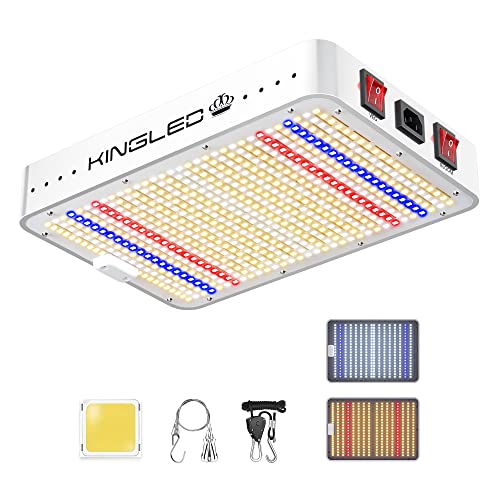Growing plants inside a grow tent or grow room requires a lot of attention to detail. It takes a lot of work to make sure everything is just right. But most growers don’t realize how important humidity control is until they’ve spent months trying to get their plants to flower.
Most indoor growers don’t understand the importance of controlling humidity levels in their grow tents. They try to do it with fans, dehumidifiers, and humidifiers, but none of these solutions really works well.
If you want to learn how to control humidity in your grow tent, then read on. In this article, I’ll explain why you should care about controlling humidity, and I’ll tell you exactly how to control humidity in a grow tent.
How To Lower Humidity In Grow Tent
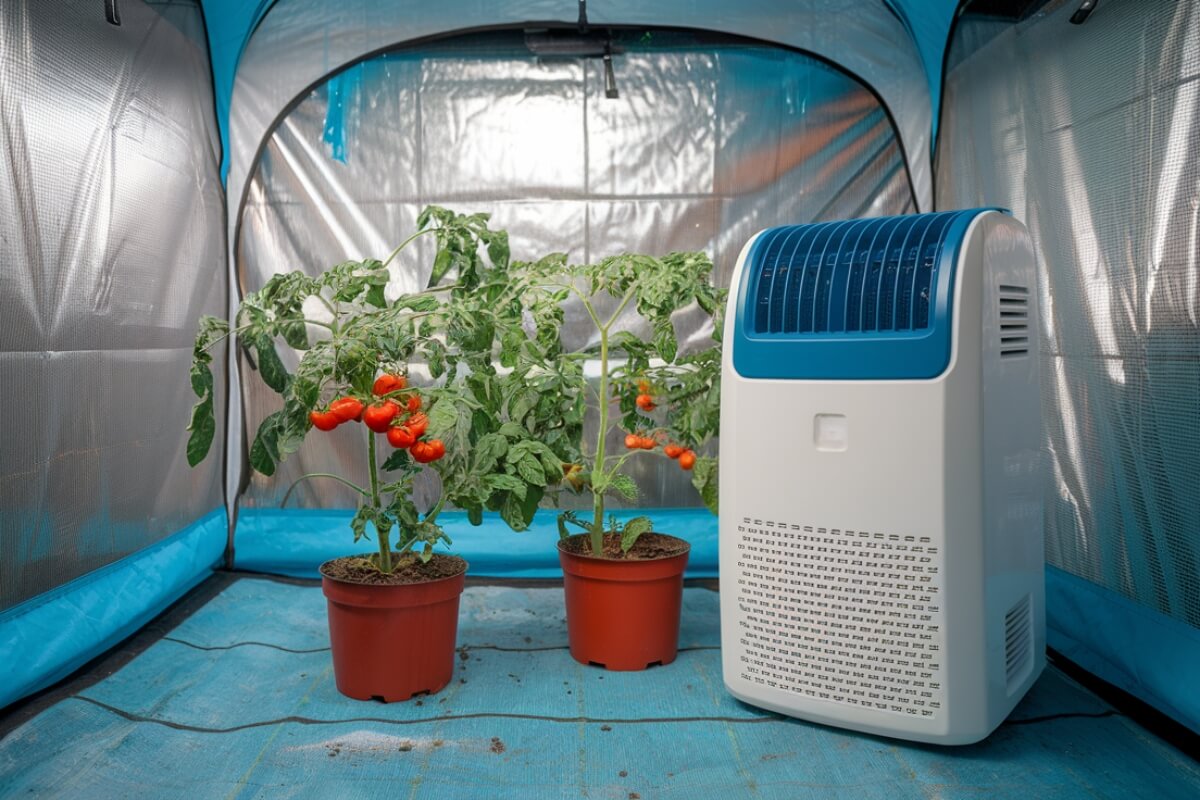
Humidity levels should be kept low in your grow tent or grow room. You can use a dehumidifier or an air conditioner to lower the humidity.
High humidity levels can lead to slower growth, bud rot, fungus, molds, and mildew. You should try to keep the humidity below 70%. If you’re exceeding that level, you need to figure out where the water is coming from and how you can prevent it from harming your plants’ growth.
Worry not! Maintaining an ideal humidity level in your grow room could be solved by the items found inside your grow room. We will try to address some basic tips on lowering the humidity inside your grow room without spending tons of cash.
High humidity causes problems because it makes plants overgrow each other. When you’re growing indoors, too much moisture can cause mold or mildew. You should avoid overwatering your plants. Too much water also leads to root rot.
Your grow tent needs to be well ventilated. You need to remove stagnant water from your grow tent. Your grow tent should be insulated and sealed. You should improve ventilation by adding more fans.
You can purchase an air conditioner if you want to lower the humidity inside your grow tent. You should make sure that your grow tent is properly insulated and sealed. You shouldn’t defoliate your plants.
What is Relative Humidity
Relative Humidity is the amount of water vapor in the air compared to the maximum amount of water vapor that could be present in the air. A high relative humidity means there is more water vapor than what the air can hold. This causes the air to become sticky and heavy.
Water vapor is always present in the air. When the temperature inside the grow tent is high, the amount of water vapor increases. This makes the air inside the grow tent humid. Humidity is caused by the movement of water molecules through the air.
Why is High Humidity Bad?
High humidity levels in your grow tents can cause mold to form. Mold can be harmful to your plants and may even kill them. You should try to avoid having too much moisture in your grow tent.
Plants need oxygen to survive. They also need water and nutrients to grow. But if you block the stomata, then the plant won’t be able to breathe properly. This will cause problems such as bud rot, botrytis, and other diseases. You should encourage healthy microbes to help your plants thrive.
To make sure that there is enough air circulation inside the grow tent, we need to reduce the amount of moisture in the air. We also want to slow down the rate at which nutrients are taken up by our plants. This means that we should decrease the amount of light that gets into the tent.
Why is Low Humidity Good in a Grow Tent?
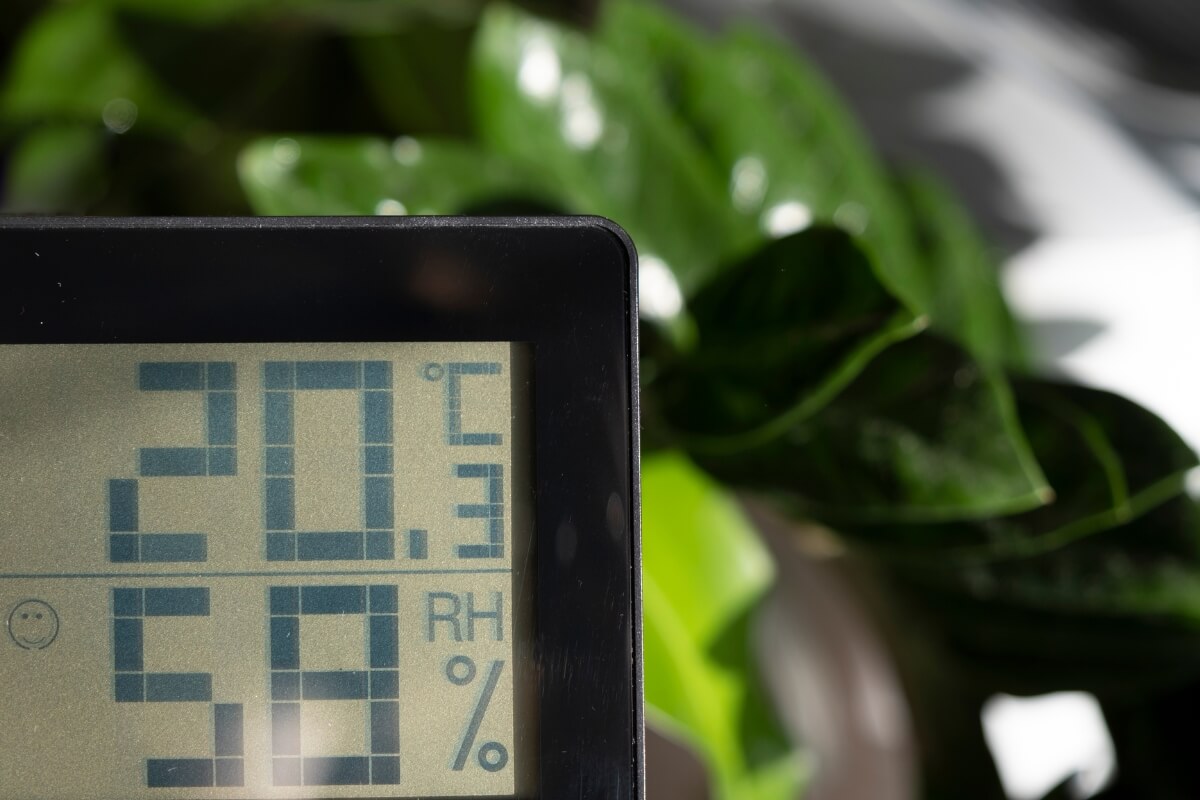
Low humidity levels in your grow tent allow for better air circulation. Air circulation helps to increase the amount of oxygen available to your plants. Oxygen is necessary for photosynthesis.
Air circulation also keeps the roots cool. Roots absorb heat and this can harm your plants. If you don’t have sufficient air circulation, your plants will suffer.
Grow tents should be kept dry to prevent mold and mildew growth. Humidity levels should be monitored to ensure proper conditions.
White mold doesn’t bother you much, but rust fungus can be really annoying. Rust fungus causes rust spots on your leaves, and root rot will make your plants wilt.
What’s the Best Temperature for Grow Tents or Grow Rooms?
The ideal temperature for growing plants indoors is between 65°F and 75°F. This range of temperatures allows your plants to grow without any stress.
When the temperature is too cold, your plants will struggle to grow. The soil might freeze and your plants will die.
When the temperature is too hot, your plants will struggle because they will not get enough sunlight. Your plants will require less energy to stay warm.
Flowering plants will usually need warmer temperatures of 75-85°F.
What’s the Best Humidity Level for Grow Tents or Grow Rooms?
Plants require high humidity when they’re young. Baby plants need lots of moisture to grow. When you feed your plants, make sure there’s enough moisture in the air.
Different plants and situations have different humidity needs:
- Vegetables need 50% to 70 percent humidity, depending on the vegetable plants and how much water they consume.
- Flowers need 40% to 50 percent humidity.
- Harvesting in grow tent requires 45% to 50% to ensure the environment isn’t too humid.
Grow tents need to be kept dry because water is needed for plants to grow. Humidity levels must be controlled during the growing process. Different types of plants require different amounts of moisture.
We should be able to control the amount of water vapor in the air inside a grow room by controlling the rate of evaporation from the surface of the growing medium. This could be done by using a fan or an exhaust vent to pull the moisture out of the air.
How To Lower Humidity In Grow Tent or Grow Room
Excessive grow tent humidity can be harmful to your plants. Here are some methods to reduce humidity in a grow room.
1. Don’t Overwater Your Plants
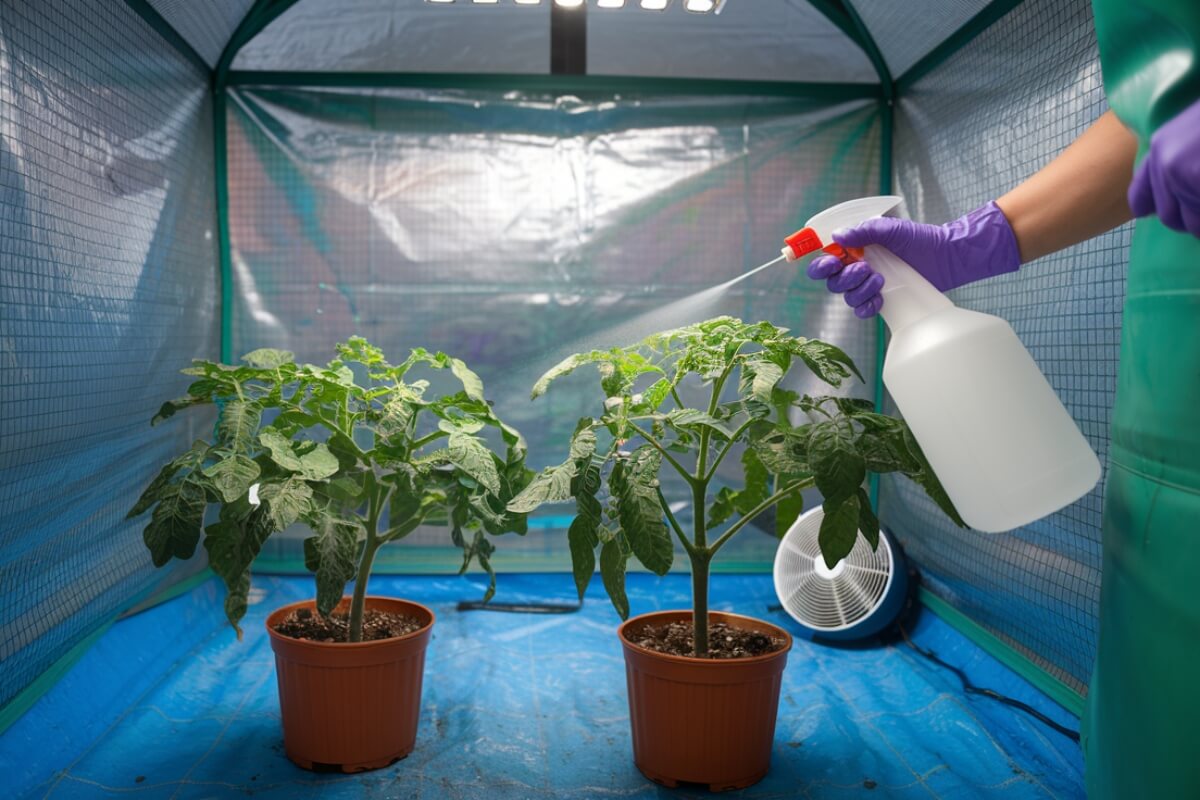
Plants need to be protected from too much moisture. Soggy soil can cause problems if it gets into plant pots or other containers. Watering should be done sparingly.
2. Remove Stagnant Water
You don’t have to spend lots of cash trying to lower the humidity level inside your grow tent. Removing stagnant, excess water can help.
Grow tents should be kept dry and clean. Water should never sit stagnant on the floor. Pests and bacteria thrive when there is excess moisture.
3. Use a Dehumidifier Inside your Grow Tent
Dehumidifiers help lower the humidity inside grow tents. You need to buy a dehumidifier if your local area commonly has high humidity.
Dehumidifiers should be used if there is too much humidity in the air. Dehumidifiers are machines used to remove moisture from air. They help prevent mold that grows from being too humid.
A dehumidifier removes humidity by condensing water vapor into liquid water. This process requires energy, but it’s worth it because it reduces the risk of mold growth in your grow tent.
I usually place my dehumidifier in the middle of my growth tent. Some dehumidifiers have an auto shut off feature when full. Nonetheless, you can also set a time and monitor how much water the dehumidifier is gathering.
Here are a couple popular dehumidifiers:
Find the Vivosun dehumidifier directly on their website.
4. Check your Plant Density in the Grow Tent
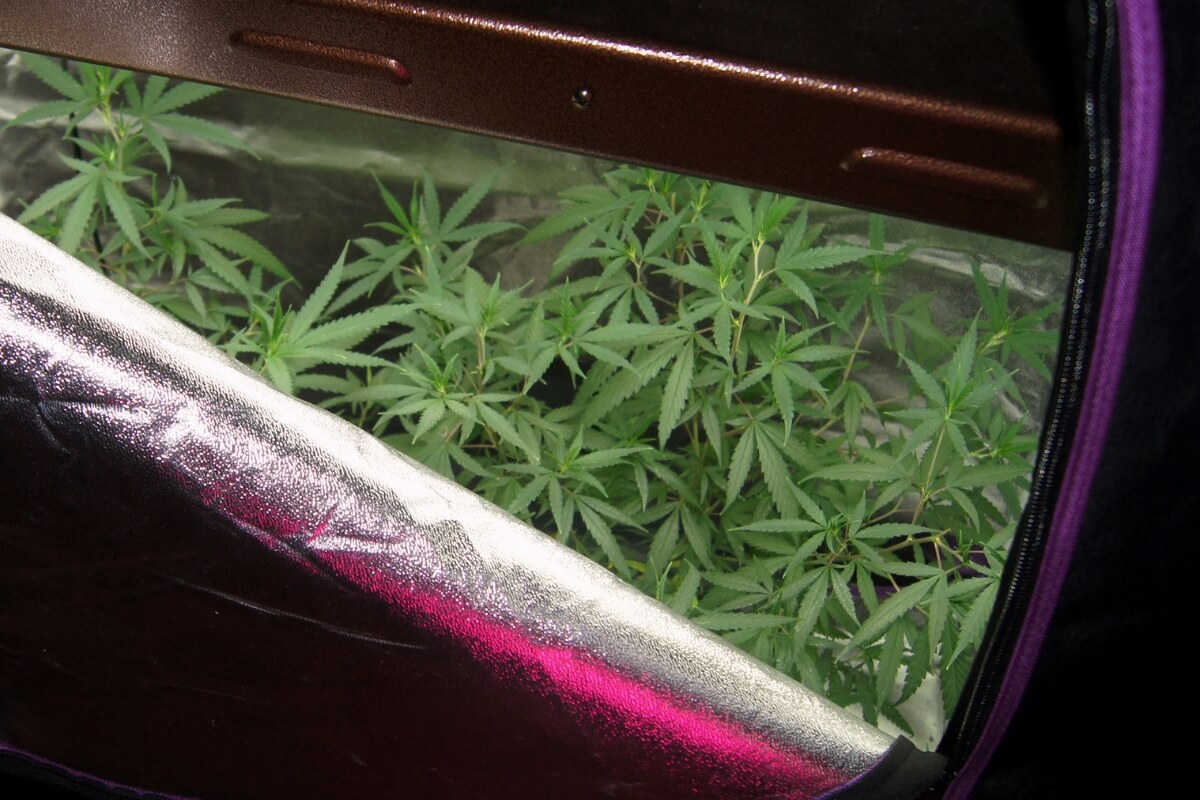
Grow tents are used to efficiently grow plants indoors. Carbon dioxide levels rise as plants grow, causing moisture to accumulate inside the tent and raising the humidity.
The humidity and water vapor will be trapped inside the grow tent if there isn’t enough ventilation or a humidifier.
You can remove plants to help with reducing the build-up of moisture inside the grow tent. Large-leafed plants should be moved first.
5. Add More Fans for Better Ventilation Improve
Putting more exhaust fans in your grow tent will increase air circulation. Increasing the fan rotation will also improve ventilation. Use an atmospheric controller with a humidifier setting to automatically control the fan speed to achieve the desired humidity level.
Ventilation methods work by pushing moist air out of the grow tent, but they won’t help you much unless you’re growing indoors. Moisture levels in the grow tent should be kept low to prevent mold growth.
Make sure that you use an exhaust fan to get rid of heat. Make sure that your exhaust fan is bigger than your intake fan. You should also be careful about using oscillating fans alone. Oscillating fans work by moving air around, but they can’t always move enough air to cool down the entire room.
Fans should be used to bring fresh air into the canopy. A hygrometer controller ensures stable temperatures and balanced humidity levels. Using a fan-based system makes it easier to automate.
6. Create Wide Air Holes
Wide air holes allow more air into the grow tent, which will decrease the humidity level. Narrower holes restrict airflow, so the air and humidity is kept inside.
When making holes, also be sure that unwanted light is kept out of the tent as much as possible.
7. Get an Air Conditioner
Air conditioners use compression and gas to pull heat out of the air, creating condensation. This results in removing moisture from the air.
Large AC units run on shorter cycles, which makes them less reliable for plant growth. Small AC systems can slowly raise the temperature. Frequent fluctuations can cause the temperature in the grow tent to rise.
A good air conditioner will keep cold air replacing hot air. Fans can reduce water vapor to keep a cool environment in the grow tent.
You should choose an adequate size of air conditioner for your grow tent. Cleaning the filter is important because it prevents bad airflow, which would otherwise raise the humidity.
8. Insulate the Grow Tent
Insulation helps prevent moisture loss and keeps heat inside the tent. Foam insulation also makes a great barrier between the outside environment, and your grow tent.
9. Choose Grow Equipment That Emits Less Heat
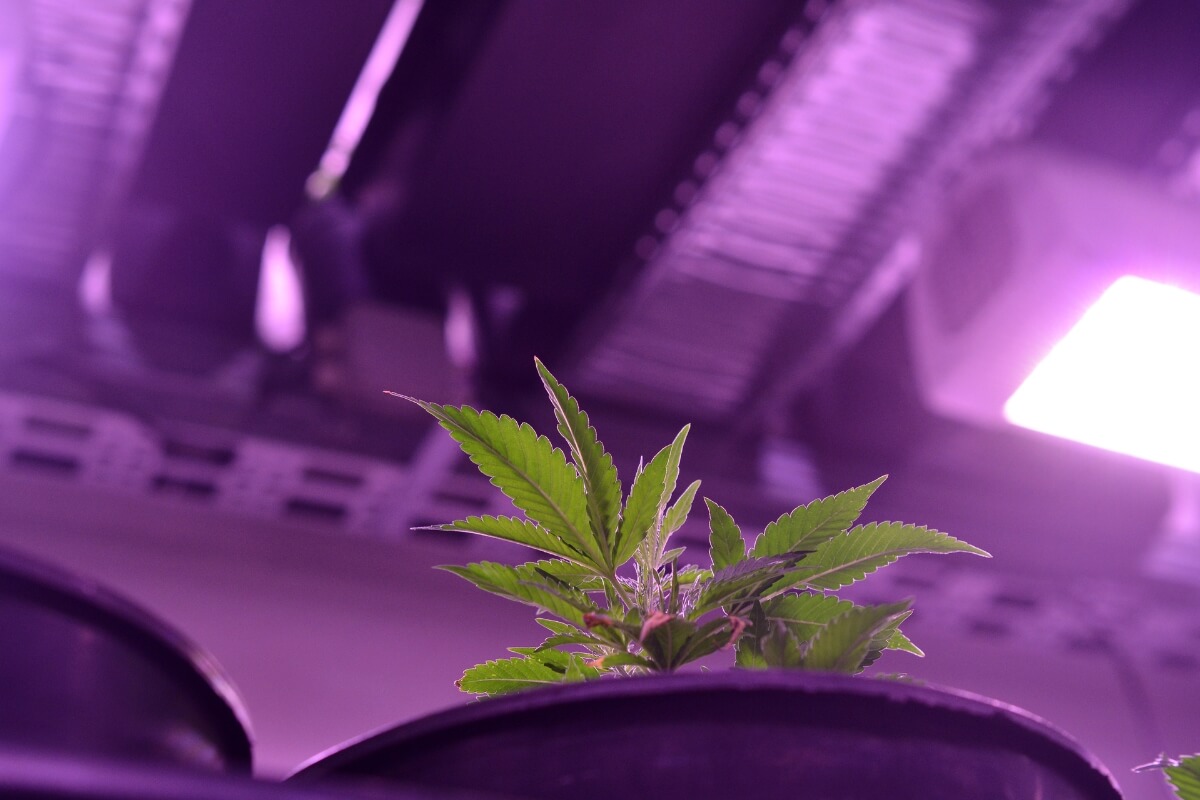
You should buy a grow light that don’t produce as much heat. You should purchase a grow light that doesn’t emit a lot of heat because heating up your grow room could be dangerous.
Lower quality grow lights may produce a lot of heat, which will increase your humidity. You should get a high quality grow light.
If your grow room is getting too hot, allowing your lights to be turned off will decrease the temperature. Letting your lights rest also helps you save on energy bills.
These are efficient grow lights:
10. Use Absorbent Soil
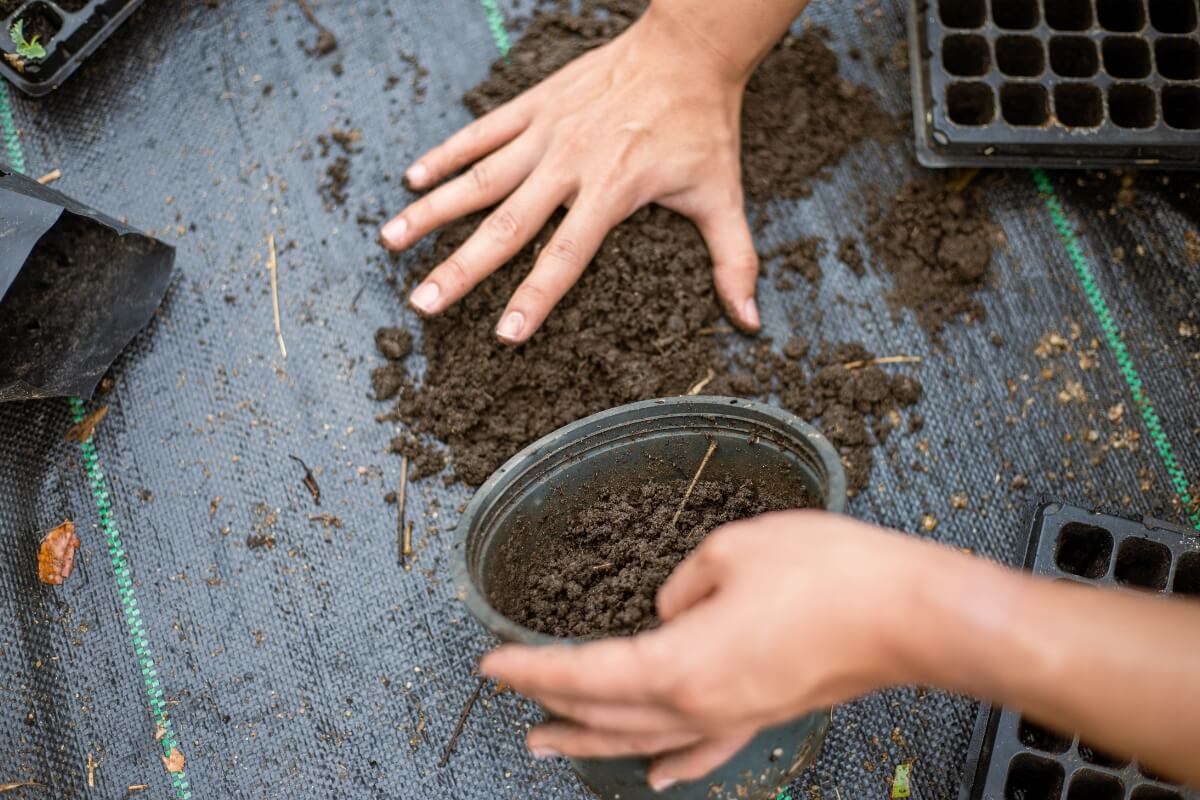
Absorbent soil absorbs excess moisture, thus reducing the amount of moisture in the grow tent. It’s best to use absorbent soil when you have a large number of plants.
Indoor growers should use sand or gravel as the base of their pots. This type of soil keeps moisture under the pot, and reduces the amount of water on top. That will help keep evaporation down, so it doesn’t add to the humidity level.
You should use perlite instead of sand, but perlite is more expensive than sand. Also, you can use lime or baking soda instead of sand. Use an absorbent surface.
11. Cut Down on the Number of Leaves
Leaves trap moisture, which increases the humidity level in the grow tent. If there are fewer leaves, then the humidity level will drop.
Control Humidity in Grow Tent or Grow Room Final Thoughts
Humidity affects every aspect of your indoor garden. It impacts your plants, which means they won’t thrive if the humidity level isn’t right.
Indoor gardeners need to continually monitor moisture, humidity, and temperatures. It’s easy to control these three things with proper monitoring and care.
We can understand how environmental factors impact the growth and survival of plants. Generally, plants struggle to transpire when both humidity and temperature are high.
Here are some other articles you might be interested in:





